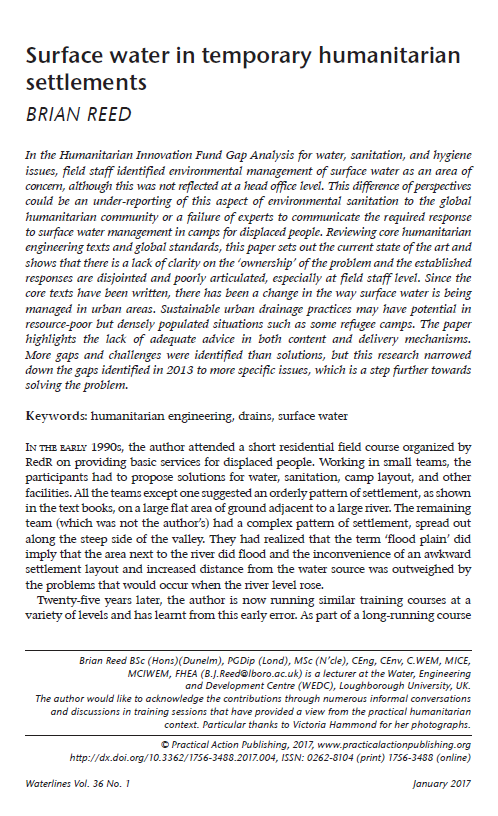GWC Helpdesk
Contact GWC
Surface water in temporary humanitarian settlements
In the Humanitarian Innovation Fund Gap Analysis for water, sanitation, and hygiene issues, field staff identified environmental management of surface water as an area of concern, although this was not reflected at a head office level. This difference of perspectives could be an under-reporting of this aspect of environmental sanitation to the global humanitarian community or a failure of experts to communicate the required response to surface water management in camps for displaced people. Reviewing core humanitarian engineering texts and global standards, this paper sets out the current state of the art and shows that there is a lack of clarity on the ‘ownership’ of the problem and the established responses are disjointed and poorly articulated, especially at field staff level. Since the core texts have been written, there has been a change in the way surface water is being managed in urban areas. Sustainable urban drainage practices may have potential in resource-poor but densely populated situations such as some refugee camps. The paper highlights the lack of adequate advice in both content and delivery mechanisms. More gaps and challenges were identified than solutions, but this research narrowed down the gaps identified in 2013 to more specific issues, which is a step further towards solving the problem.
For the author version of the full text, please reach out to the corresponding author
Brian Reed
B.J.Reed@lboro.ac.uk